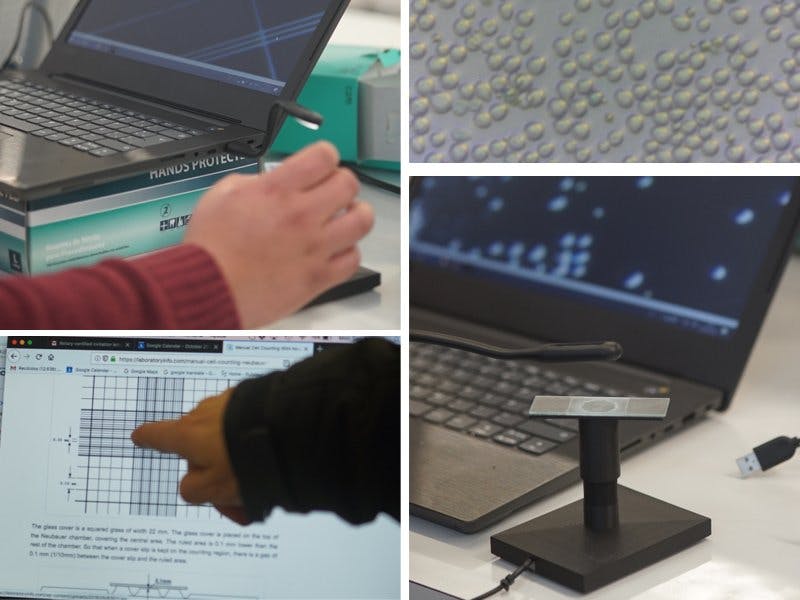Yeast is the fundamental part of fermentation, the desired flavour profile and an efficient and reliable attenuation a brewer is looking for, depends on his work. However, in Argentina and Chile the great majority of brewers are using new dehydrated yeast for every batch and only a few of them are storing and reusing yeast in-house. This situation implies not only the waste of yeast itself, as an important and expensive coproduct of beer making, but also is detrimental in terms of quality, repeatability and differentiation of products. Most brewers use just a few brands and strains of yeasts (mainly S-04, Notthingham, US-05).
In order to consistently manage yeast in breweries the use of a microscope becomes fundamental. It allows to count and evaluate the viability of cells and to determine the optimal pitching rate for every new batch. Moreover, this practice is an excellent starting point for brewers to increase knowledge and experience about the microbiology involved in brewing.
The standard procedure of counting requires an optical microscope and a Neubauer chamber where the yeast sample is quantified. Recent approaches to DIY microscopy in the biohacker movement can be tested and improved to communicate and facilitate this task to brewers.
Hardware design goalsThe goal of our design is to allow the consistent evaluation of viability and count of yeast cells from a digital image taken with a low-cost DIY microscope.
The materials for the microscope prototype should be easily available.
Integrate the hardware output with already existing informatic tools for manual and automatic yeast counting.
State of developmentThis was our point of departure (before the project) with a Community microscope of Public Lab
Through a series of workshops, and working on top of previous open-source microscopes, we have designed, tested and documented several different setups of cameras, optics and manipulators for our microscope prototypes. With our last iteration (BM2L), based on a C270 Logitech webcam and a 3D printed base to hold and focus an M12 lens, we were able to see and clearly distinguish between dead (methylene blue stained) and live (non stained) yeast cells.
The manipulator was replaced by a screw focusing design based on Tristan-Landin et al. (2019) with the aim to simplify the operation and the idea of replacing the Neubauer counting chamber by a cheaper 1 channel microfluidic slide.
We are confident that further improvement and testing of this cheap and simple prototype (Issues) will allow us to deliver a functional microscope to local brewers and engage them in the setup of a common image database to test and train an algorithm for automatic cell counting which we are already exploring.
All the documentation and results of the project can be consulted in our Gitlab repository










Comments
Please log in or sign up to comment.